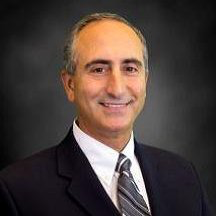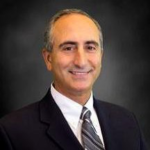
A panel of highly respected senior living experts from a variety of disciplines came together at the recent 2019 Navigator Leadership Summit to share their insights. The summit attracted approximately 180 attendees from Navigator’s members and business partners, representing senior leadership, procurement and operational decision-makers from senior living and skilled nursing facilities. Plus, we had business partners serving the industry such as food & dietary supplies, medical products and services, and business products and services.
Navigator Group Purchasing Inc. is the largest and most experienced full-service GPO exclusively focused on senior living, offering a full range of programs, tools and services to help members achieve their resident and financial goals. The company is a subsidiary of Managed Health Care Associates, Inc.
Our summit kicked off with a presentation by Jill Sumner, Vice President, Population Health Management, American Health Care Association. Her presentation focused on the growth in Medicare Advantage and the opportunities it presents for LTC provider-owned MA plans. She started with an overview of population health management models and MA organizations, then focused on Special Needs Plans, which target the unique needs of special populations and are divided into three categories: Institutional SPN (I-SNP), Dual-Eligible SNP (D-SNP), and Chronic-Condition SNP (C-SNP). She noted that the overall number of SNP plans has increased over the past year due largely to LTC provider-owned plans.
The benefit in population health management lies in the ability to take back control over care management, clinical outcomes, patient engagement, revenue management, population analytics, and quality management. The closer you are to the PMPM payment, the more flexibility and avenues you have to capture the value you’re creating, Sumner said.
The challenges to LTC provider-owned health plans include cultural transformation, staffing, sufficient enrollment, numerous providers, utilization (including hospice), finding the right partners, community size and locations, and network development. Among the opportunities are access to advanced clinical professionals for preventive, regular, and urgent care; aligning incentives among providers for improved quality and responsiveness; increased resident and family satisfaction; market differentiation; increased lengths of stay; ability to keep residents healthy longer; supplementary revenue streams and potential cost offsets; and access to data for informed decision-making.
Sumner described in detail seven steps to successful health plan development:
Assessing feasibility and readiness
Selecting a partner
Securing a state HMO license
Applying to CMS Marketing and enrollment
Building your care management capabilities
Developing and reviewing the P&L
She concluded by discussing resources and support available to LTC provider-owned health plans through the Population Health Management Council and the American Health Care Association/National Center for Assisted Living.
Trends in dining
In a discussion of top trends in senior living, experts noted that the restaurant approach to senior living dining — dining services that emphasize hospitality over healthcare — started in 2016 and is becoming more common. Operators are now hiring food service professionals from restaurants and hospitality organizations, adding different meal plan pricing options to offer residents more choices, and supplementing the main dining area with alternative dining venues. The common theme is variety.
The top trends in 2019 include:
Applying mainstream dining trends to senior care, such as adding food trucks, home delivery meal kits (particularly for independent living), and food halls with a variety of independent stations.
Rethinking venues and “pop-up” dining types — for example, adding variety through different types of dining experiences and formats, such as booths and banquettes, rather than concentrating dining in more traditional spaces and formats.
Adding fast-casual food options such as bistros, grab-and-go venues, cafes, wine bars, and breakfast shops that offer services such as snacks and late-night dining.
Another major trend involves new approaches to memory care dining. A rapidly aging population and an anticipated rise in the number of memory-impaired residents is prompting thoughtful changes in memory care dining settings, the type of plates and utensils used, food types, and staff participation in memory care dining.
“Farm-to-fork” and craft creations, such as craft brews, are becoming popular. With these options, residents see the “story” of the food or craft item as it makes its way to the dining table, taking interest and participating in its creation.
Other trends include AI in senior dining, a focus on wellness and nutrition as a holistic approach to healthcare, and evidence-based memory care dining.
Tech updates
Rob Paulsson, President, Strategic Healthcare Programs, discussed technology solutions for the entire continuum of care, including a new product aimed at the skilled nursing space.
With more than 20 years of experience in the industry and a healthy market share, SHP grew up in the home health space, Mr. Paulsson said. Today the company offers solutions for home health, hospice, home infusion, and hospitals/ACOs, as well as a new Skilled Nursing Solution designed for SNFs. One feature that has powered the growth of SHP as a company is ease of use. SHP is in the business of taking complicated data and making it simple to use, he emphasized.
SHP’s newest product is currently in beta testing at three SNFs ranging in size from two to 30 facilities. Demonstrations and presentations are ongoing, and the full release is coming this summer, Paulsson said.
Healthcare has been very siloed, as have the data sets within it, and CMS has been trying to change that in a number of different ways. SHP believes it has a role to play in this effort by enabling data to flow between care settings. The company’s CareStat® product is designed to allow hospitals and others who would want to see the data to receive it from PAC providers, Paulsson stated, if those PAC providers choose to provide that data.
Another possibility, he said, is to enable the same thing for SNFs. SHP can make data sharing available as an option for customers so they can exchange data in a fast, efficient, secure, and timely manner. He ended by discussing benchmarking against competitors and peers as an area of real value for home health customers, who appreciate the granularity of SHP’s benchmarking.
Fred Bonaccorso is Executive Vice President at Navigator Group Purchasing Inc.




